Make a permanent all-wheel drive Renault Duster. The structure and principle of operation of all-wheel drive Renault Duster
Renault Duster is a car that is very popular in Russia. This popularity is explained by several factors:
- relatively low price. In the class, perhaps, there are no other cars that could compete with this nominal Frenchman;
- reliability. Of course, Duster does not set the bar for reliability, but judging by the reviews of the owners, the car is pretty good;
- comfort of movement. Again, based on the cost and class, the car is very roomy and comfortable. There is a lot of space in the cabin, plenty of space in the luggage compartment.
- the presence of all-wheel drive.
The ability to actively use all four wheels is an undoubted advantage of the vehicle, especially on domestic roads, or rather, in domestic off-road conditions. Going to the dacha, along a country road washed out by rains, taking the family out for a picnic in the forest - all this Duster, of course, can do.
How to turn on all-wheel drive on a Renault Duster
Without going into the features of Duster's all-wheel drive yet, because most motorists just don't delve into technical side question, explore how to enable four-wheel drive for Renault Duster.
To activate the function in the car, there is a convenient washer, made quite neatly and, one might say, stylishly. It can be installed in one of three positions:
- lock. In this mode, the machine operates in full drive. Still, you probably have to touch on the technical side, saying at least that in the Lock mode, the clutch located in the gearbox is blocked. And the power is evenly distributed between the axles of the car. This mode is recommended for use in off-road conditions, as well as on icy or snowy roads. In Lock mode, in order to save the car's systems, you need to move at low speeds. The maximum is 80 kilometers per hour. On the forums of the owners of this brand of car, you can find some information about the tests of the regime. It should be noted that riding high speed in this mode, it can lead to failure of the clutch, and the gearbox itself. The consequences, to be honest, are not very pleasant, since spare parts for the Duster are still expensive;
- 2WD - front-wheel drive mode. The washer in the 2WD position is usually installed in the city or on highways where the quality of the road surface is at least satisfactory. Driving in this mode contributes to significant fuel savings and optimization of vehicle speed. This is the base mode. Only they, for sure, are used by a large number of dusters;
- AUTO is a mode that provides the best grip on the road. Actually, the name of the mode suggests that all adjustments related to the distribution of power on the vehicle axle are performed by the computer independently. By default, on a good road, front-wheel drive works. In the event that the quality of the road surface deteriorates, the system transfers part of the power to the rear axle. All the same electromagnetic clutch, which was discussed above, can be transferred to the rear axle up to 50% of the power. That is, the car can move on a full plug-in drive. The question of the need to connect all-wheel drive is only decided not by a person, but by a computer.
Which of the modes to choose in a particular situation should be determined by the owner of the car. It seems that the 2WD mode should become the base one. As for all-wheel drive, here experienced motorists will undoubtedly prefer manual mode. And beginners are advised to trust the automation, which on this machine is quite solid and should not fail.
How all-wheel drive works on a Duster
When all the modes of the car are described, it is indicated how to turn them on, you can dwell in more detail on how the all-wheel drive works on the Duster.
The device of Duster brand cars with front-wheel drive is quite simple. The torque goes into the gearbox and is distributed between the drive wheels. At the ends of which CV joints are installed. To be more precise, the CV joints are only external. The internal hinges have tripods, as a result of which the axles move with some clearance.
Thus, we can say that the design of the Duster with front-wheel drive is simple and typical of most front-wheel drive cars. And this is a definite plus. Renault Duster is a budget car. The simpler it is, the easier and faster it is to repair. The front-wheel drive Duster, alas, will not be able to confidently drive where the Duster with all-wheel drive will pass.
The device of Duster cars, which have the ability to connect the rear axle to work, is similar to the device of such cars as X-Trail and Qashqai from Nissan. Also, everything is quite simple, but there are certain features.
A feature of the gearbox of the all-wheel drive model is that it has a transfer case, thanks to which the torque is directed to the gearbox located at the back. In the gearbox, as already noted, there is an electromagnetic clutch. The movement of the washer can block the clutch. Clutch blocking can also be carried out using automation in AUTO mode.
If the clutch is locked, then the torque cannot be directed to the rear axle. With an unlocked clutch, torque is transmitted to the axle. Thus, in fact, the launch and operation of the all-wheel drive on the Duster is carried out.
It is worth repeating that using manual four-wheel drive long time Not recommended. If the clutch experiences regular heavy loads, it will quickly fail. As a rule, in such a situation, it is not repair that is required, but the replacement of the coupling. And, alas, it is not cheap.
Thus, the front-wheel drive on a Renault Duster car has a simple device, it is easy to turn on, and you can set one of two modes. It can be noted that, given the class of the car and its cost, all-wheel drive is implemented soundly. Maybe it could have been better. But the best is the enemy of the good.
With the entry into the domestic car market, Renault Duster has gained very wide popularity. This is due to the fact that for relatively low money, the consumer receives a high-quality crossover with all-wheel drive. For many motorists, the 4x4 function is a must, as they have to drive off-road quite often. This is especially true of farm and forest lands. But, what is the principle of all-wheel drive on Renault Duster?
How Renault Duster all-wheel drive works is described in the video:
First, consider not the technical side of the issue, but the functional one. Since modern automotive trends tend to reduce fuel consumption, cars are often equipped with switches from all-wheel drive to conventional. Renault Duster has not lost this useful functionality either. So, in the passenger compartment there is a washer-switch, which allows you to turn on different modes. Let's consider the question in more detail:
Thus, it is clear that both the control unit and the driver himself can choose which mode to drive.
The principle of operation of all-wheel drive on Renault Duster
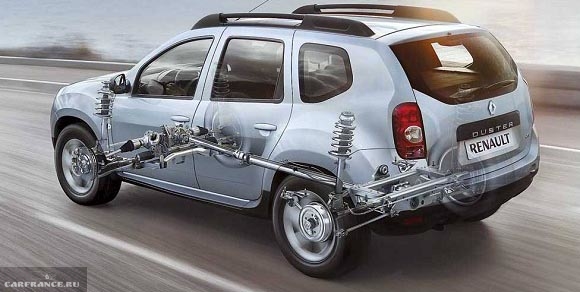
If we talk about the principle of rear-wheel drive, you need to understand some of the technical and design features of Renault Duster. When front wheel drive, all the torques go through the cv joints to the front wheels. How does the rear work?
In this case, a transfer case is installed on the car, which redirects the torque and to rear wheels. The system was invented quite a long time ago, back in the distant 50s, but the principle has remained to this day, although these devices are being improved all the time.
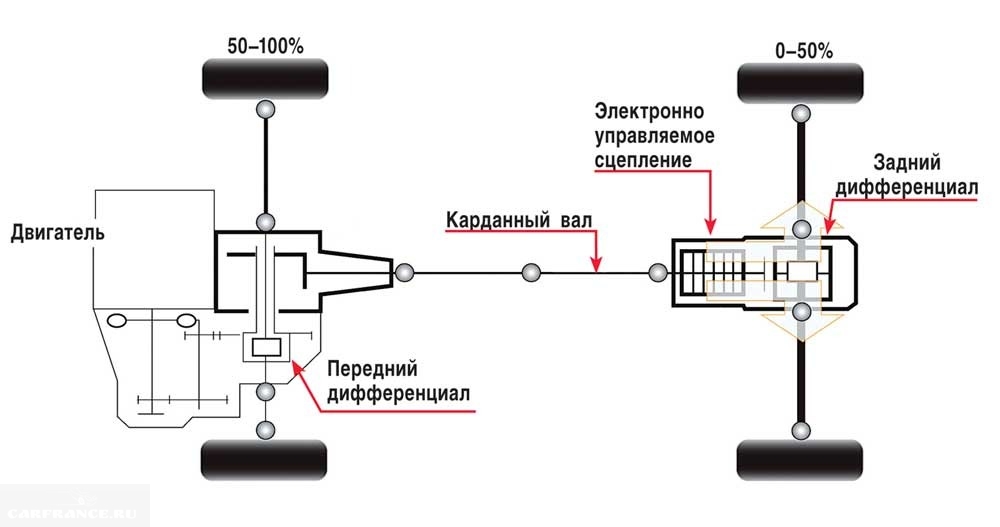
Classic plug-in all-wheel drive scheme
A clutch is installed in the Renault Duster rear gearbox, and if it is blocked, the rear drive does not work.
It can be turned on either by the driver or by the ECU. Let's consider everything more simply and clearly: the engine supplies torque to the gearbox, and from there it gets to the junction box.
Detailed diagram of all-wheel drive on the Duster
Through the cardan shaft, it enters the rear gearbox, in which there is a clutch-regulator for turning on the rear drive. If it is on, then all-wheel drive works, if it is off, then only the front. IN .
Let us remind you once again that it is not worth forcing the use of a clutch-switch for a long time, since it can fail under a power load. Therefore, the AUTO mode is considered the most optimal to use.
Where necessary, it is worth turning on the manual mode for a short time, and when it becomes unnecessary, switch back to the AUTO mode.
conclusions
The all-wheel drive device turned out to be simple and understandable. Of course, if the clutch fails, you will have to replace the entire assembly, which is expensive, so you should follow the rules for using the 4x4 mode.
On the market off-road vehicles in particular in Russian Federation, the French car Renault Duster is in a pretty good position. A car that has all-wheel drive is able to overcome impassability quite easily. At the same time, the car owner drives calmly, and does not think that at the slightest exit from the road the car will get dirty. How is the four-wheel drive on this model, and what features does it have, and, of course, what is its principle of operation? Let's try to figure this out now.

How four-wheel drive works
The all-wheel drive scheme on the "Frenchman" Renault Duster includes several elements - this is a rear differential, a transmission, an electromagnetic automatic clutch and a transfer case. How do they interact with each other and how to turn on the four-wheel drive?
A plug-in or permanent all-wheel drive is installed on the model indicated by us, how is the all-wheel drive turned on? The answer to such a question will be ambiguous. So, the transfer case is built into the transmission, as it were, and the differential is already controlled automatically through the clutch microcontroller.
In this car, control is carried out using an electronic selector, which is located on the center console. How is the all wheel drive turned on? The selector includes only 3 modes - clutch lock, monodrive system and automatic clutch.
When you shift front wheel drive, the clutch control is disabled. By the way, this is why it decreases several times, because in this case the generator does not need to be supplied with the machine and electronics of the rear gearbox, as well as all its mechanisms.
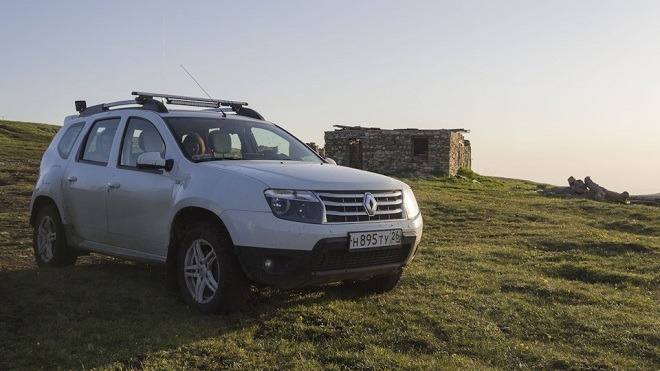
So, in automatic mode, the automatic clutch is activated independently, the control of which does not depend on the driver, but occurs due to special wheel slip sensors, which are located in the Renault Duster in the ECU. All this means is that when the front of your model starts to slip, then instantly the torque begins to be transmitted to the rear wheels and turns it off at the right moment. This is how the all-wheel drive device looks like.
At the same time, the manufacturer strongly recommends using not the all-wheel drive system all the time, but the automatic mode, in the presence of ice on the road, which will increase your safety several times while driving.
During the mode of blocking the operation of the automatic clutch, its operation is carried out at a constant level. So, all sensors that can somehow affect its operation are instantly turned off, in turn, the cardan shaft will be connected to the gearbox, and will ensure its rotation.
It is believed, according to numerous reviews from car owners Renault Duster, with prolonged use of the blocking mode, the coupling may fail and bend over.

Owner reviews
Many Renault Duster car owners speak differently about the all-wheel drive system, many tell in detail how all-wheel drive works and how to correctly use this feature in their car. Others help with their advice on when and how to turn on the four-wheel drive, and so on. This allows potential buyers to draw their own conclusions about the Duster. And often, positive feedback much more than the negative ones. Let's give you some examples.
Alexey, driving experience 9 years:“I bought my Renault Duster back in 2014, for all the past time, I dashed off 58 thousand kilometers. I often go fishing, hunting, to the country, that is, to places where an ordinary passenger car cannot reach. I can say for sure that the machine copes with its declared functions perfectly well. Of course, not everything works perfectly, but what is there is more than enough. There were no breakdowns, but they say that the blocking function should not work constantly, otherwise a breakdown cannot be avoided.
Pavel, driving experience 4 years:“The all-wheel drive system does not suit me at all. At 60 thousand run, the clutch flew. The car was under warranty, the dealer quickly changed everything, and if not for the warranty, it would have cost me a lot of money. Also, fuel consumption is 3 liters more than a car with front-wheel drive, but with the same power plant. I think it's all about how the clutch works. I read a lot of reviews, I realized that this is normal. I want to sell my car and buy a front-wheel drive option.
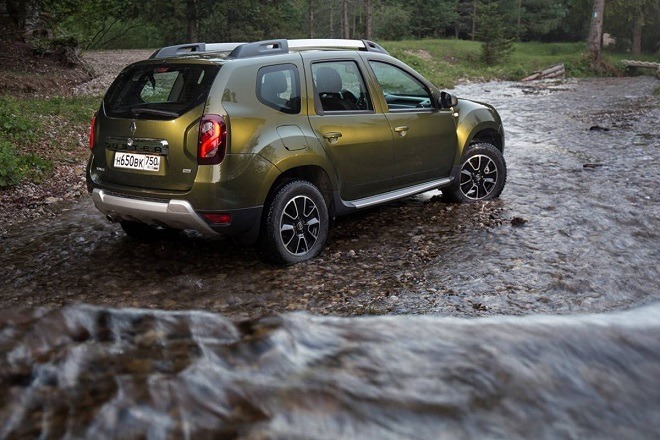
Results
Drawing a conclusion from the numerous reviews of the owners of the "Frenchman", the all-wheel drive version provides a large number of features that are not available to the owner of the monodrive version. If you know the modes and principle of operation of the clutch well, then you can easily come to a comfortable driving over rough terrain, and you should not worry about the large and frequent repair of the transmission.
In the SUV market, Renault Duster is far from last position. Renault Duster 4x4 makes it easy to overcome off-road, freeing the driver from thinking that the car can get stuck at the slightest exit from the road. How is the all-wheel drive system on this car arranged and what are its features? This article will answer these questions in detail.
Principle of operation
The Renault Duster all-wheel drive system diagram includes a transmission, an automatic electromagnetic clutch and a rear differential. How do they interact with each other? Let's figure it out.
Is permanent or plug-in all-wheel drive installed on Renault Duster? The answer to this question is ambiguous. In our case, the transfer case is built into the transmission, and the differential is controlled in automatic mode using the clutch microcontroller.
On this car, control is carried out using an electronic selector, which is located on the center console. It includes only three modes: monodrive, automatic and clutch lock.
When switching to monodrive mode, clutch control is completely disabled. By the way, this is why fuel consumption is significantly reduced: the generator does not need to supply electronics and automatic rear gear and its mechanisms.
In auto mode, the automatic clutch is activated, which this time is controlled not from the driver's side, but with the help of wheel slip sensors, which are located in the Renault Duster ECU. This means that when the front wheels begin to spin, the torque will instantly begin to be transferred to the rear axle and turn it off at the right moment. The manufacturer recommends using the automatic mode in icy conditions, since it greatly increases safety when driving.
In the lock mode of the friction clutch-machine, its operation is performed continuously. Thus, all sensors that may affect its operation are turned off, and the cardan shaft is rigidly connected to the gearbox and ensures its rotation.
In this mode, the manufacturer recommends not to exceed the speed of 80 km/h and not to use it excessively. for a long time. Based on the feedback and experience of the owners, with long-term use of the lock mode, the clutch may overheat and fail.
What are the owners saying?
On the topic of the operation of all-wheel drive systems on Renault Duster, there are many reviews of the owners of this car on the network. This allows us to draw certain conclusions about the operation of these versions of Duster.
Most often, the reviews are quite positive: “I bought my car in 2014, during which time I have already rolled 58,000 kilometers. Often you have to go hunting, fishing, to the country house and to other corners where the previous passenger car was categorically lacking. I can say one thing: the machine performs its functions with a bang! Not that everything works perfectly, but what this cross provides is more than enough. There have been no breakdowns yet, but they say that blocking should not be neglected - it can fly.
However, there are many skeptics whose reviews position all-wheel drive versions as not the most good option for the acquisition: “All-wheel drive categorically does not suit me. First of all, the clutch broke at 60,000 runs! Thank God that the car was under warranty: the dealer promptly replaced the oil pump and brushes of its engine - otherwise it would have cost a pretty penny. In addition, gas consumption is three liters higher than that of a friend with front-wheel drive and exactly the same engine: I think the point is precisely how the clutch works. After reading the reviews, I found out that this is normal. I'm thinking of selling and getting a front-wheel drive version."
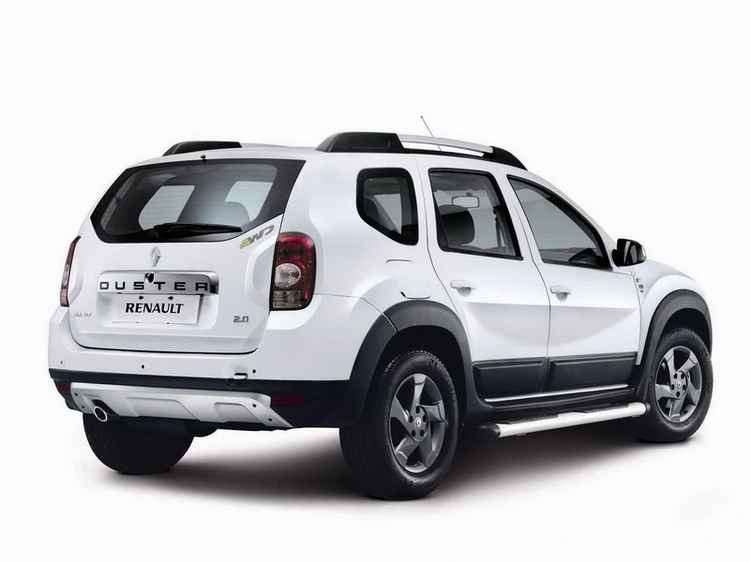
Info from the maual for servicemen.
ETC: Provides vehicle stability according to driving conditions.
ETC Switch:
The ETC switch is used for driver interaction with the torque distribution system. With it, you can select the ETC modes: FRONT DRIVE, AUTOMATIC 4WD, LOCKED 4WD.
Everything is clear here.
Stoplight switch:
This sensor tells the ETC system that the driver is braking in such a way that the ETC system needs to reduce the torque to improve the braking stability of the vehicle.
Wheel speed sensors:
Transmits the rotational speed of each of the vehicle's wheels. Vehicle speed is defined as the average speed of the front wheels.
The actuator (that is, the clutch):
Distributes power between front and rear wheels.
It's clear here too.
4X2 Mode (2WD):
Front-wheel drive (2WD) mode is enabled when the driver moves the switch to 2WD. After the ETC system enters front-wheel drive mode, the 2WD warning light on the instrument panel comes on.
In the event of an internal malfunction or mechanical malfunction of the injection computer, as well as serious intersystem malfunctions, the ETC system enters the front-wheel drive mode (safety mode), while the 2WD and malfunction warning lights (saw) light up.
If the ETC clutch temperature rises too high (if PR009 Coupling temperature > 220 °C), the ETC system
enters front-wheel drive mode and the front-wheel drive warning light flashes.
That is, if it’s bad then: the 2WD signal lights and the saw are on. And if it's really bad, then the 2WD warning light flashes.
AUTOMATIC ALL-WHEEL DRIVE (AUTO) mode:
AUTO mode is enabled when the ETC switch is in the
AUTO and the 4WD LOCK mode is off. When the ETC system enters AUTO mode, the 2WD and 4WD LOCK warning lights on the instrument panel go out. After selecting this mode, ETC sets the target torque according to the speed difference between the front and rear wheels. In order to make this torque adjustment, several conditions must be checked:
running engine,
The driver is accelerating (PR021 Accelerator pedal position > 20),
If the estimated clutch temperature is too high, the AUTOMATIC 4WD mode becomes unavailable and the ETC system changes to:
– either in 4WD LOCK mode (to reduce friction between discs if PR009 Clutch temperature is set to 160 °C< 220 °C). Мигает сигнальная лампа 4WD LOCK,
– or in 2WD mode (risk of damage to the actuator if PR009 > 220 °C), in which case the FRONT DRIVE warning light flashes.
The ETC system returns to AUTO mode as soon as the ETC temperature falls below 142°C.
We conclude: the temperature of the coupling is determined by the frequency of rotation of the wheels! Original. And, first we go to LOCK, and when the estimated temperature exceeds 220 ° C, the rear-wheel drive is turned off. This must be understood that with a significant difference in the frequency of rotation of the wheels, the clutch is blocked as much as possible, and if the frequency does not equalize, then we turn off in Fig! I was driving down the hill and drowned...
4WD LOCK mode:
The 4WD LOCK mode is activated if, while the ETC system is in the
AUTO The driver moves the ETC switch to the 4WD LOCK position and then allows the switch to return to the AUTO position. After the ETC system enters 4WD LOCK mode, the 4WD LOCK warning light on the instrument panel comes on.
After selecting this mode, the ETC system provides maximum torque at speeds below 30 km/h.
The required torque gradually decreases from 30 km/h to 100 km/h. At speeds above 100 km/h
4WD LOCK mode is released and the ETC system enters AUTO mode.
In order to make this torque adjustment, several conditions must be checked:
running engine,
The driver is accelerating (PR021 > 20),
The driver does not brake
the vehicle speed is above the threshold value of 30 km/h.
In the event of a deviation from the norm, the 4WD LOCK mode becomes unavailable.
“The number “100 km / h” appears here, I don’t know what it is for. I personally checked it - the “4WD LOCK” lamp goes out at 83 km / h. Plus, the repetition of the algorithm from the AUTO mode: overheated - turned off "
Here's what's on the internet...
HOW THE CLUTCH WORKS (Gennady Emelkin)
Structurally, the schemes of operation of the plug-in all-wheel drive "Renault Duster" and "Mazda CX-5" are close. Both vehicles have an electronic clutch located in the rear axle gearbox housing. It, guided by information about the difference in the speeds of rotation of the front (main drive) and rear wheels, coming through the sensors of the anti-lock braking system to the control unit, if necessary, is blocked by connecting the second axle. The clutch control algorithm is quite complex and depends on a number of external factors.
The scheme of the all-wheel drive "Mazda CX-5" is as follows. With uniform movement, when the wheel speeds are the same, torque is applied to the clutch housing (4). The discs (5) of the control clutch are open. Driven (1) and drive (7) discs are stationary relative to each other and rotate together with the driven shaft of the coupling (9) connected to the shaft main gear rear wheels. Torque is not transmitted to the rear wheels.
As soon as the wheels of the front axle begin to slip (angular difference of 15-20 degrees), the four-wheel drive control unit sends a signal to the electromagnetic coil (2). Under the action of the magnetic field, the armature (8) is attracted to it and compresses the discs of the control clutch (5), which connect the drive disc to the clutch housing (6). Due to the difference in their speeds, the drive disk rotates, the balls (3) move along the inclined guide groove and shift the driven disk, which compresses the main clutch disks - the clutch is engaged.
To turn off the clutch, the control unit removes the signal from the coil, the discs of the control clutch open, the drive disc rotates, the balls return to their original position - the discs of the main clutch open. This will happen not only with a steady uniform movement, but also when the anti-lock braking system and the dynamic stabilization system are activated.
Protection is provided to protect the coupling from damage in harsh environments. When the oil in the gearbox is heated to 100 degrees, the control unit turns off the clutch and does not turn it on until the temperature drops to 60 degrees.





